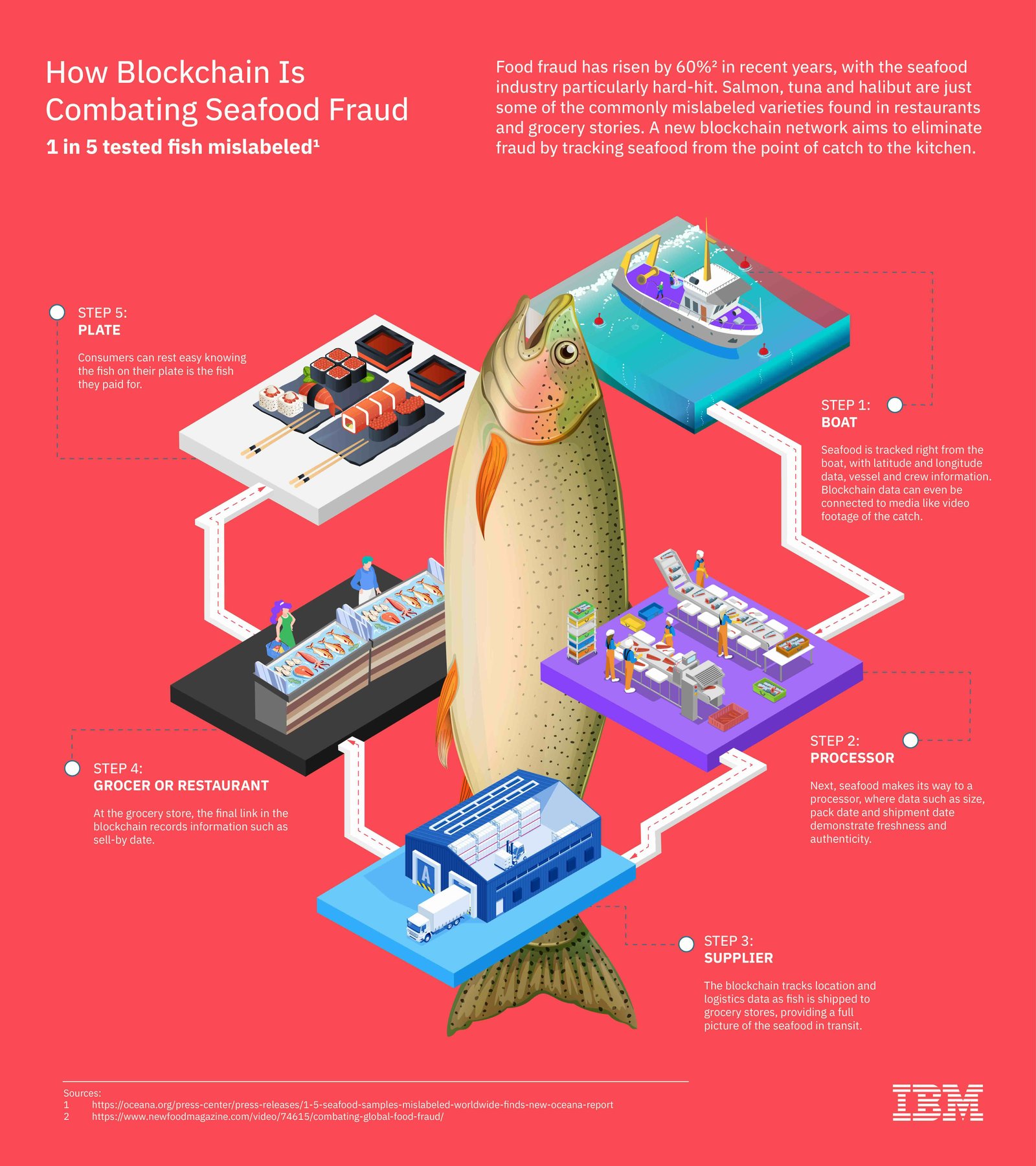Food fraud siphons up to $50 billion from the global food industry every year and endangers public health. When deployed rigorously and realistically, blockchain could prevent this shadowy crime.
The problem? It comes with a high price tag. Scalability, cost, interoperability and integration pose significant barriers. Not to mention the privacy concerns, regulatory uncertainty and long path to stakeholder adoption.
But food fraud isn’t going anywhere. As David Carvalho, CEO of Naoris Protocol, observed:
“Most people would be surprised to hear that food fraud is an issue, but it’s a major one, costing the global food industry between $30 billion and $50 billion every year. That’s a small percentage of the sector’s total value — over $12 trillion — but still equivalent to the GDP of a small country like Malta.”
So, what’s to be done? And how can blockchain implementation truly be achieved?
Food fraud bites deeper than we realize
The Food and Agriculture Organization of the United Nations (FAO) outlines that food fraud involves purposefully deceiving customers about the quality or content of the food they buy.
Essentially, it’s the intentional substitution, addition or removal of materials for economic gain.
The typologies of fraud are diverse and sophisticated. These include mislabeling, theft, counterfeiting and dilution.
Real-world examples abound. Melamine has been added to milk in China to falsify protein content. Horsemeat has been sold as beef in Europe. Olive oil is often diluted with cheaper vegetable oils.
The economic toll is staggering. But the actual cost is far higher when accounting for reputational damage, regulatory compliance, legal battles and the erosion of consumer loyalty.
In some cases, the human cost can be far more devastating; the 2008 melamine scandal in China harmed over 300,000 infants.
Temujin Louie, CEO of Wanchain, highlighted the vicious cycle created by food fraud:
“An incident of fraud leads to a health scare, which erodes consumer trust. This diminished trust can translate into reduced sales for the implicated brand and the broader product category, thereby economically harming legitimate businesses.”
The damage is not calculated as the sum of individual losses. It should be calculated as a systemic weakening of the food industry’s foundation.
Cracks in the supply chain let food fraud fester
The complexity and opacity of global supply chains create fertile ground for fraud. The cold chain is particularly vulnerable.
Failures in cold chain logistics can lead to spoilage. These failures allow fraudsters to misrepresent storage conditions or sell compromised goods as fresh.
Fraud is not limited to high-profile cases or luxury goods. Dairy, spices, seafood, organic products, honey and fruit juices are frequent targets.
Carvalho added that fragmented data systems are a major Achilles’ heel:
“Many companies maintain their own internal tracking systems, but these often lack interoperability with their suppliers or customers. This results in ‘information islands’ preventing a holistic, end-to-end view of the supply chain.”
Fraudulent products enter and move through the system undetected without shared, reliable data.
Blockchain bites back
Blockchain technology can serve as an antidote to this growing crisis. Yet Louie cautioned that attempts in blockchain-based accountancy have had their share of challenges.
“In the 10+ years since Ethereum launched, we’ve yet to witness any true disruption,” Louie warned. “One reason why the promise of blockchains in supply chains has been largely unfulfilled is that early adopters were guilty of oversimplifying the problem.”
Blockchain technology’s core principles can create a more transparent and trustworthy system. Decentralization ensures that no single entity controls the data. And immutability guarantees that once data is recorded, it cannot be altered or deleted.
Related: A Bitcoiner’s guide to South Africa’s Garden Route
The benefits don’t end there. Selective transparency enables sharing relevant information with authorized stakeholders without exposing sensitive commercial data. Meanwhile, smart contracts can automate processes and enforce agreements.
Ultimately, cryptography ensures the integrity and security of the ledger. And to take it even further, integrating Internet-of-Things sensors with blockchain creates an immutable audit trail of environmental conditions, crucial for cold chain integrity.

Real-world implementations are beginning to bear fruit. In collaboration with IBM, Walmart uses Hyperledger Fabric to trace pork in China and mangos in the US, reducing trace times from days to seconds. TE-Food and Provenance offer blockchain-based traceability solutions that improve food safety and transparency. Major food companies like Nestlé and Carrefour and platforms like Seafood Souq are exploring blockchain to enhance supply chain transparency.
Louie emphasized the paradigm shift:
“Traditional food supply chains have operated on a model of trusting intermediaries, relying on paper documents, third-party certifications, and the word of various actors along the chain. Blockchain, in contrast, moves toward a system based on verifiable data.”
Carvalho explained the deterrent effect:
“A well-implemented blockchain system can act as a powerful deterrent, as the increased visibility and auditability make fraudulent activities riskier and more likely to be exposed.”
The decentralized deal
Despite its promise, blockchain is not a panacea. Scalability, cost, interoperability and integration with legacy systems pose significant barriers to adoption.
The “garbage in, garbage out” problem remains a fundamental limitation. Blockchain can only ensure the integrity of data once it is onchain — but it cannot be held responsible for the accuracy of the data entering the chain.
Oracles and IoT devices that feed external data onto the blockchain are vulnerable to tampering and technical failure. Manual data entry is also susceptible to error or manipulation. A perfect traceability record does not prevent a compromised oracle from feeding false data or a colluding party from entering fraudulent details at the point of origin.
Privacy concerns, regulatory uncertainty and stakeholder adoption are additional hurdles. Food supply chains involve sensitive data that businesses are reluctant to expose.
Related: AI agents are poised to be crypto’s next major vulnerability
Permissioned blockchains and selective transparency offer solutions. These do, however, require careful governance and clear data access protocols. Regulatory frameworks are evolving, and broad stakeholder participation is essential for success.
Louie advocates for a pragmatic approach. “Start with clearly defined use cases where blockchain can deliver demonstrable value, rather than attempting a broad, unfocused implementation,” Louie suggested. “Robust governance models, especially for consortium blockchains, are critical.”
Carvalho stressed the need for industry-wide standards, training and collaboration:
“Technology alone is insufficient. Success hinges on redesigning underlying business processes, investing in training and change management, and fostering a culture of collaboration and data sharing.”
A synthesized future for food integrity
The convergence of blockchain with IoT, AI and other innovations offers a promising path. IoT sensors provide real-time data on a product’s journey, creating a tamper-proof record.
AI algorithms analyze large data sets to detect anomalies and optimize logistics. Rapid testing methods, smart packaging, robotics and digital certificates further enhance food integrity.
The infrastructure built to fight fraud yields broader benefits. These include improved operational efficiency, reduced food waste and substantiated sustainability claims.
Blockchain and its complementary technologies have become attractive even for companies less directly affected by fraud. Pilot projects are yielding valuable lessons. Industry consortia are forming, and standards are beginning to emerge.
The potential rewards extend beyond reducing fraud to encompass improved food safety, reduced waste, enhanced consumer confidence and a more sustainable, equitable and resilient global food system.
The unseen bite of food fraud may be pervasive, but it is not invincible. If thoughtfully deployed and integrated, blockchain could be the trust layer that finally fixes the $50-billion food fraud problem.
Magazine: Crypto wanted to overthrow banks, now it’s becoming them in stablecoin fight
Read the full article here










